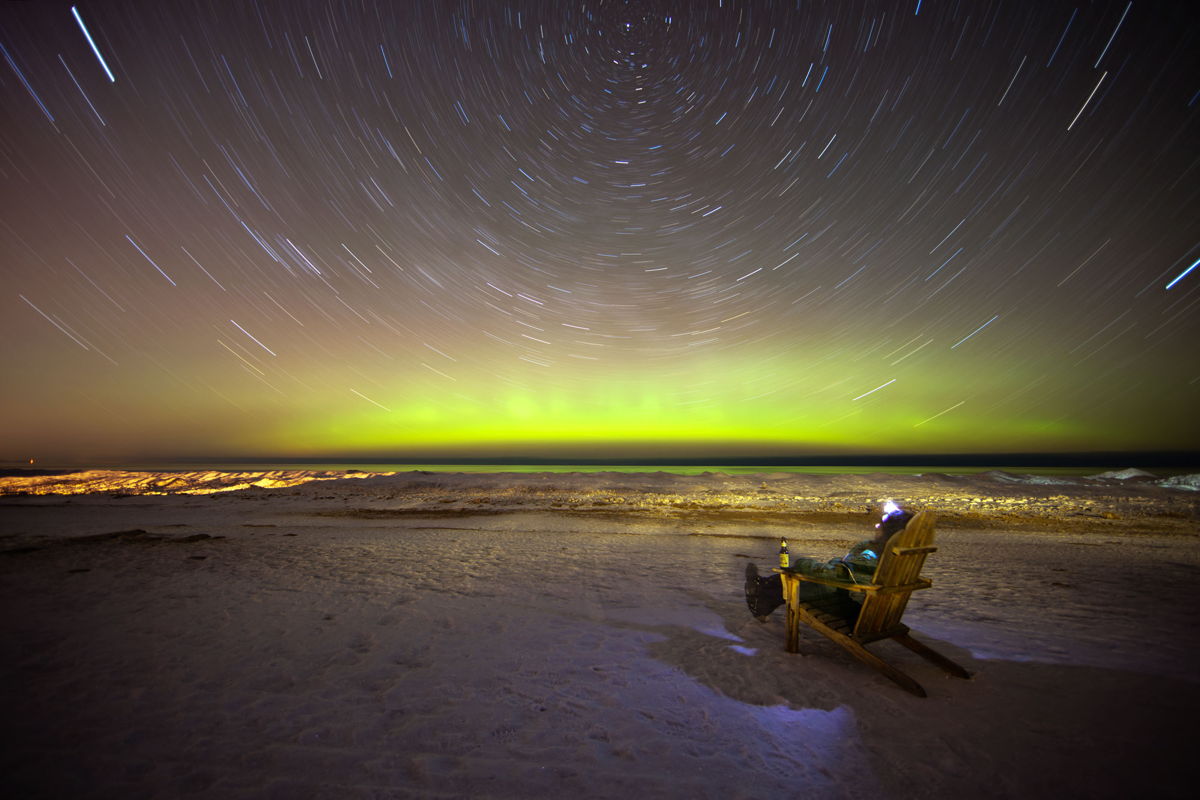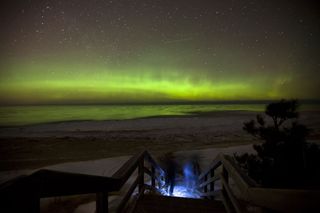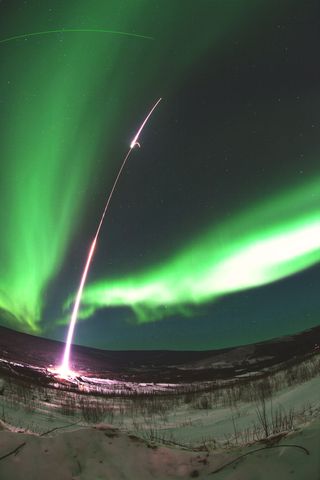Skywatcher Photos Catch Stunning Northern Lights Display

A surprisingly vivid display of the northern lights dominated the night sky in recent days, offering dazzling weekend light shows as far south as Nebraska for observers with clear weather, according to skywatchers.
The northern lights show flared up on Saturday (Feb. 18), when a stream of particles from the solar wind slammed into the Earth's magnetic field to trigger what was by all accounts a magnificent aurora.
"A nice display last night," skywatcher Shawn Malone of Marquette, Mich., told SPACE.com in an email.
Malone snapped amazing photos of the northern lights display as the auroras danced over Lake Superior. It was a frigid night in the single digits on the thermometer, but well worth the wait, she said.
"Superior is just dim enough to allow for a long exposure of 17 minutes to capture star trails revolving around the North Star," Malone said. "I only stayed seated in my Adirondack chair for half of the exposure, as I had to get up and move around to keep warm, hence the transparent appearance of myself!"

Another of Malone's photos shows a couple walking a dog under the auroras as a plane flies high overhead.
"Can only wonder what the view must have been like from the passing plane, pictured as a streak middle frame," Malone said.
Get the Space.com Newsletter
Breaking space news, the latest updates on rocket launches, skywatching events and more!
According to astronomer Tony Phillips, who runs the skywatching website Spaceweather.com, the weekend aurora light show was visible far beyond the normal far northern latitudes.
"Northern lights crossed the Canadian border and descended as far south as Nebraska in the United States," Phillips wrote in a Sunday aurora alert.
Auroras are created when charged particles from the sun interact with Earth's upper atmosphere, giving off a glow that can be seen by the unaided eye. The solar particles are funneled over Earth's poles by the planet's magnetic field, making auroras typically visible at latitudes in the far north or south. Southern auroras are known as the southern lights.

Skywatchers were not the only ones to take advantage of Saturday's amazing auroras.
NASA launched a rocket into the northern lights display late Saturday as part of an experiment to measure the effects of intense aurora activity on signals from global positioning system satellites and other spacecraft. The small suborbital rocket blasted off from the Poker Flat Research Range just north of Fairbanks, Alaska, to probe a 6-mile (10-kilometer) section of the northern lights, which stretched from horizon to horizon, the researchers said.
This story was corrected to reflect that Shawn Malone is female.
You can follow SPACE.com Managing Editor Tariq Malik on Twitter @tariqjmalik. Follow SPACE.com for the latest in space science and exploration news on Twitter @Spacedotcomand on Facebook.
Join our Space Forums to keep talking space on the latest missions, night sky and more! And if you have a news tip, correction or comment, let us know at: community@space.com.

Tariq is the Editor-in-Chief of Space.com and joined the team in 2001, first as an intern and staff writer, and later as an editor. He covers human spaceflight, exploration and space science, as well as skywatching and entertainment. He became Space.com's Managing Editor in 2009 and Editor-in-Chief in 2019. Before joining Space.com, Tariq was a staff reporter for The Los Angeles Times covering education and city beats in La Habra, Fullerton and Huntington Beach. In October 2022, Tariq received the Harry Kolcum Award for excellence in space reporting from the National Space Club Florida Committee. He is also an Eagle Scout (yes, he has the Space Exploration merit badge) and went to Space Camp four times as a kid and a fifth time as an adult. He has journalism degrees from the University of Southern California and New York University. You can find Tariq at Space.com and as the co-host to the This Week In Space podcast with space historian Rod Pyle on the TWiT network. To see his latest project, you can follow Tariq on Twitter @tariqjmalik.











